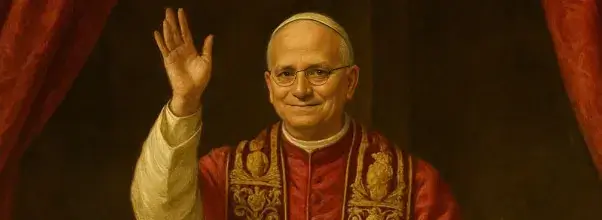With the recent election of Pope Leo, the Roman Catholic Church stands at a pivotal moment. As a Catholic myself, I should feel hope—but I also feel the weight of the past decade. Many traditional Catholics, myself included, are approaching this new pontificate with deep caution. It’s not because we reject papal authority or fear change itself. It’s because we still bear the bruises left by the pontificate of Pope Francis.
The resignation of Pope Benedict XVI in 2013 marked the end of an era. Benedict was a theologian and a guardian of sacred tradition. He reaffirmed the legitimacy of the Latin Mass and sought to restore continuity in Catholic liturgy and doctrine. When he stepped down, there was sorrow—but also trust. What followed, however, was not continuity. It was rupture.
Francis: The Wrecking Ball Pontiff
Under Pope Francis, the Vatican became increasingly hostile to traditional Catholics. His papacy was not marked by pastoral care, but by ideological aggression. Faithful Catholics attached to tradition—especially the Latin Mass—found themselves ridiculed, marginalized, and even punished. Francis’s now-infamous Traditionis Custodes crushed communities devoted to the old rite. He lashed out at so-called “rigid” Catholics while extending olive branches to those openly contradicting Church teaching.
In both tone and policy, Francis often acted less like a shepherd and more like a progressive strongman. His style was careless, boorish, and—at times—spiteful. He spoke glibly on complex doctrinal matters, embraced progressive activists, and seemed to delight in confusing the faithful. His innovations around LGBTQ outreach and ambiguous language on moral issues unsettled even moderate Catholics. For traditionalists, it was open war.

Pope Francis was not an anomaly; he was the inevitable fruit of the post-Vatican II revolution. For decades, traditional Catholics warned that the ambiguous documents and “pastoral tone” of the Council were a Trojan horse for modernism. With Francis, the mask finally slipped. The wolf no longer bothered with sheep’s clothing. The golem of Vatican II—fashioned from novelty, ambiguity, and humanism—stood fully revealed. His papacy exposed the true trajectory of the progressive faction within the Church: not reform, but rupture. And for many faithful Catholics, it confirmed what they had long suspected—this was not just bad policy; it was a counterfeit faith.
The Backlash He Never Saw Coming
And yet, there was a silver lining. Like all overreach, Francis’s heavy hand produced resistance. His attempts to suppress tradition backfired. What emerged was not retreat or defeat—but awakening. Across the globe, lay Catholics began rediscovering the depth and beauty of their faith, not in spite of Francis, but because of him.

In this way, Pope Francis functioned like a vaccine—his papacy was the irritant that produced the immune response. He created white blood cells in the Body of Christ: young, faithful Catholics with spines of steel and a love for tradition. The analogy here is political. Just as Obama’s overreach gave rise to the Tea Party and eventually President Trump and MAGA, Francis’s radicalism ignited a grassroots counter-revolution in the Church who will be quick to call out heretical shenangigans from Pope Leo.
The New Pope’s Inheritance
Now Pope Leo steps onto the stage—but not onto a blank one. The bridges burned by his predecessor still smolder. There will be no lengthy honeymoon period. Traditional Catholics have learned not to take promises or appearances at face value. The days of naive optimism are over.
And yet, there is reason for cautious hope. The cardinals could have doubled down. They could have chosen another ultra progressive. But perhaps the warning signs were too stark. Perhaps they sensed the rising spirit of resistance among the laity. Perhaps they understood that another Francis-style papacy risked open schism.
The Laity Will Save the Church
Venerable Fulton Sheen once said, “Who is going to save our Church? Not our bishops, not our priests and religious. It is up to you, the people. You have the minds, the eyes, the ears to save the Church.” That prophecy now feels eerily timely. The laity has awakened. Not through bitterness, but through clarity. Not to rebel, but to rebuild.

Conclusion: Stay Awake, for the Enemy Never Sleeps
In the end, Pope Francis’s true legacy may not be the progressive dream he envisioned, but the restoration he unwittingly sparked. For those of us who still kneel at the altar of tradition, who still believe in the timeless truths of the faith, our time has come—not through comfort, but through conflict.
Charity calls us to be cautiously optimistic, but let us not be lulled into complacency. The enemies of truth are tireless. The devil, as Scripture reminds us, prowls like a roaring lion, seeking whom he may devour. In the Garden of Gethsemane, Christ turned to His Apostles and found them sleeping. “Could you not watch one hour with me?” he asked. That question echoes down through the centuries—and lands squarely in our time.
Many believe the Church has been living through its own Passion these past sixty years: betrayal, confusion, mockery, and scourging from within and without. But even now, in this long night, the call remains the same: Watch and pray. Stay vigilant. Remain faithful. The restoration of the Church will not come through papal charisma or institutional reform—but through the resolve of ordinary Catholics who refuse to sleep through the Passion of the Bride of Christ.
—Wolfshead




